Exploring the Winter Forest
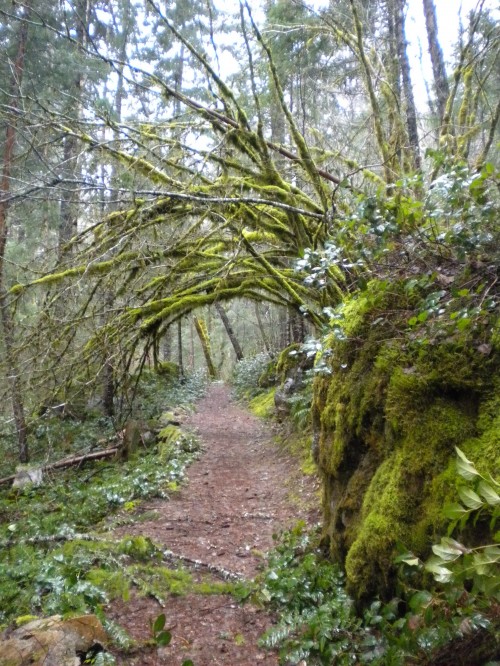
So far, winter in the North Cascades has brought us snow, rain, more snow, and until this week, several weeks of consistent rainfall. For now, the majority of snow at the lower elevations near the North Cascades Environmental Learning Center has disappeared.
On a recent rainy Saturday, I slipped on my rain gear and headed into the wet forest to poke around and explore our wooded neighborhood during the heart of winter. I began my walk on the Sourdough Creek Trail near the Learning Center, right outside my back door. The trail meanders through a mossy, lichen-clad forest of large Douglas fir, western redcedar, western hemlock and a variety of deciduous trees, including big leaf maple, vine maple, alder and paper birch. The forest’s understory is thick with undergrowth, including Oregon grape and salal. The trail ends above the Learning Center at Sourdough Falls, which flows through Sourdough Creek into Lake Diablo.
I was most interested in exploring this path because it is the trail I frequented the most this past fall with Mountain School students. With the large amount of rain and snow over the last few months, I wanted to explore the changes that may have occurred on or near the trail since autumn. I was also curious to see how the heavy rainfall that flooded Sourdough Creek in December impacted the landscape near the waterfall.
The forest was saturated with moisture. Mosses carpeting rocks and tree trunks illuminated throughout the forest, creating a vibrant green glow. But what caught my attention during the hike was the amount of fallen trees and branches. These downed branches gave me a chance to take a close look at the tightly bound catkins and cones of nearby deciduous trees.
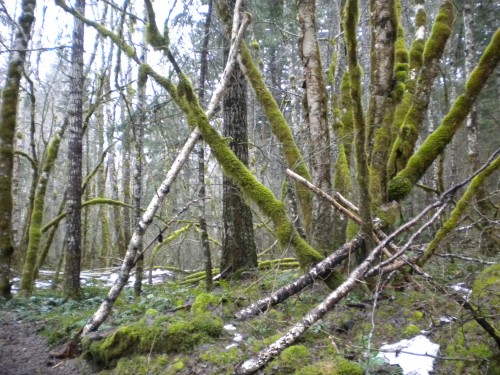
Downed alder trees are a common sight throughout the Sourdough Creek Trail
Thick moss glows bright green in the moist forest
Catkins hang from fallen branches of an alder tree
New downed trees create small obstacles
Prior to reaching Sourdough Falls at the end of the trail, signs of change were already present. This was the first time I had hiked this portion of the trail since the creek rose in December. Sandy gravel mixed with woody debris had washed up on a portion of the trail leading to the waterfall, and I had to pick my way carefully a short distance across the debris. Battered tree trunks of various sizes lined the shores of the creek, and a section of the bank downstream had apparently washed out from the flooding event in December.
What was most impressive was the new view hikers will have of the waterfall. Previously a large pile of tree trunks, branches and rocks was jammed between the waterfall and the creek, forcing those who wanted the full effect to scramble above to get a complete view of the fall. The debris pile was apparently washed further down the creek. Now hikers can step out and receive an unimpeded view of the waterfall.
Sourdough Falls flows through remnants of debris from recent flooding
Rocks and woody debris are washed up near the trail leading to Sourdough Falls
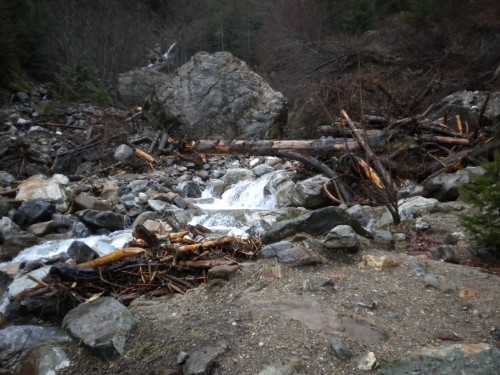 Remnants from recent winter flooding of Sourdough Creek are washed up along the bank
Remnants from recent winter flooding of Sourdough Creek are washed up along the bank
I encourage residents and guests of the Learning Center to explore the trail that leads to Sourdough Falls to see the effects of nature’s catastrophism. As the natural world moves in constant flux, you never know how this rugged landscape might change.


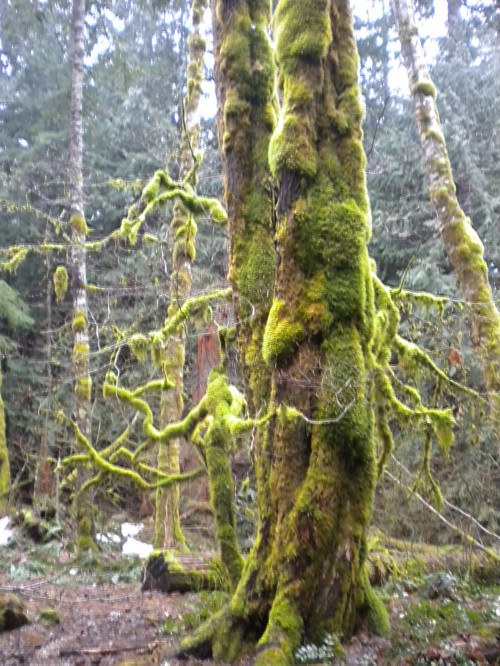
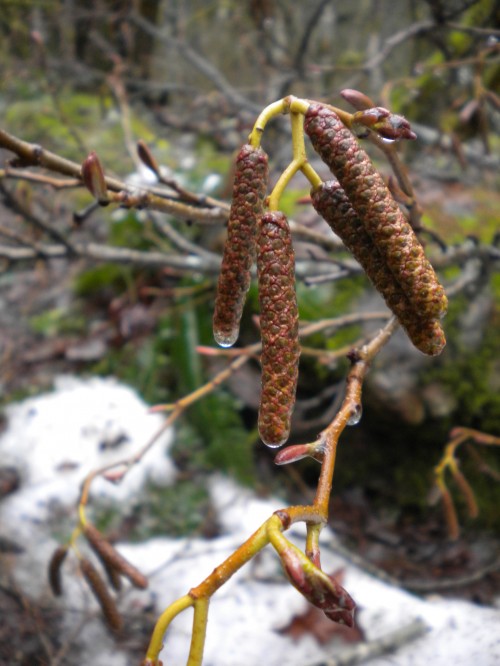
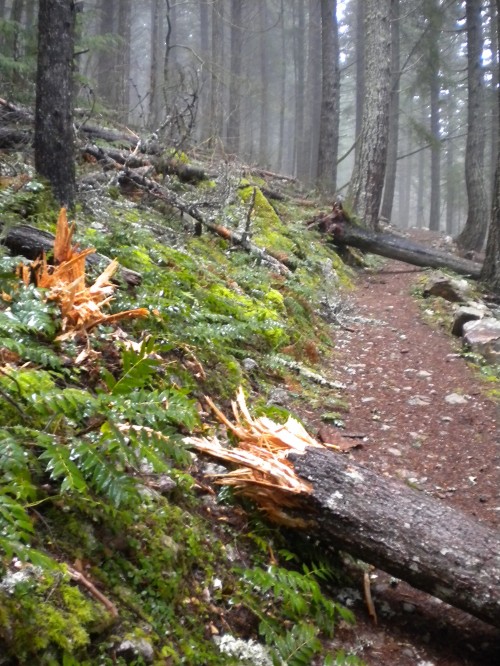
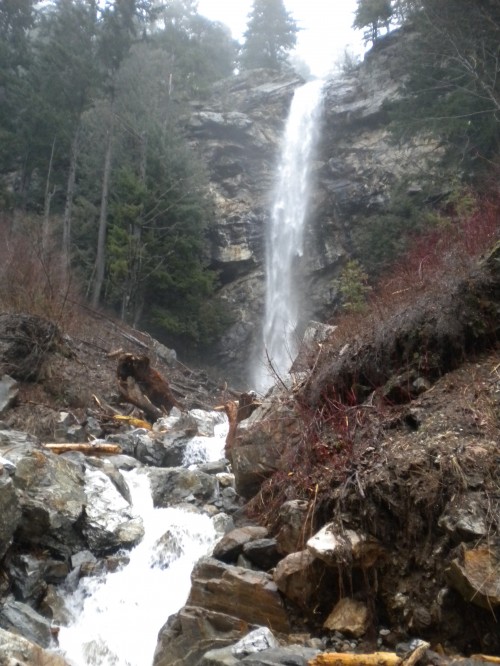
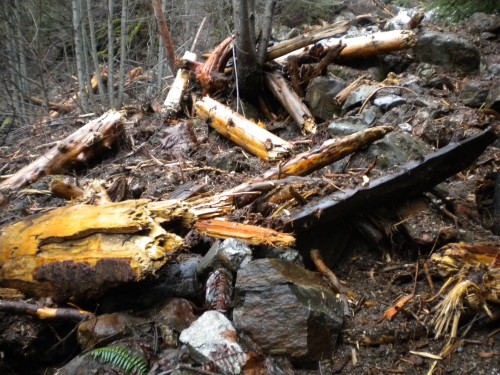
Nice article Codi! It makes me want to get out on the trail!
Thanks for the new info and pictures. It will be good to walk that way in another month or two and see the changes.